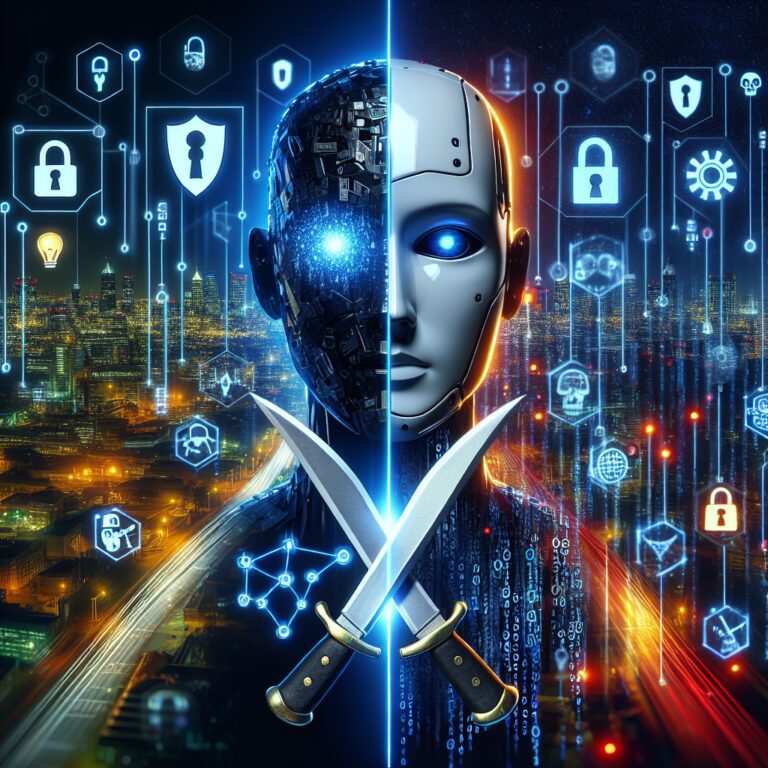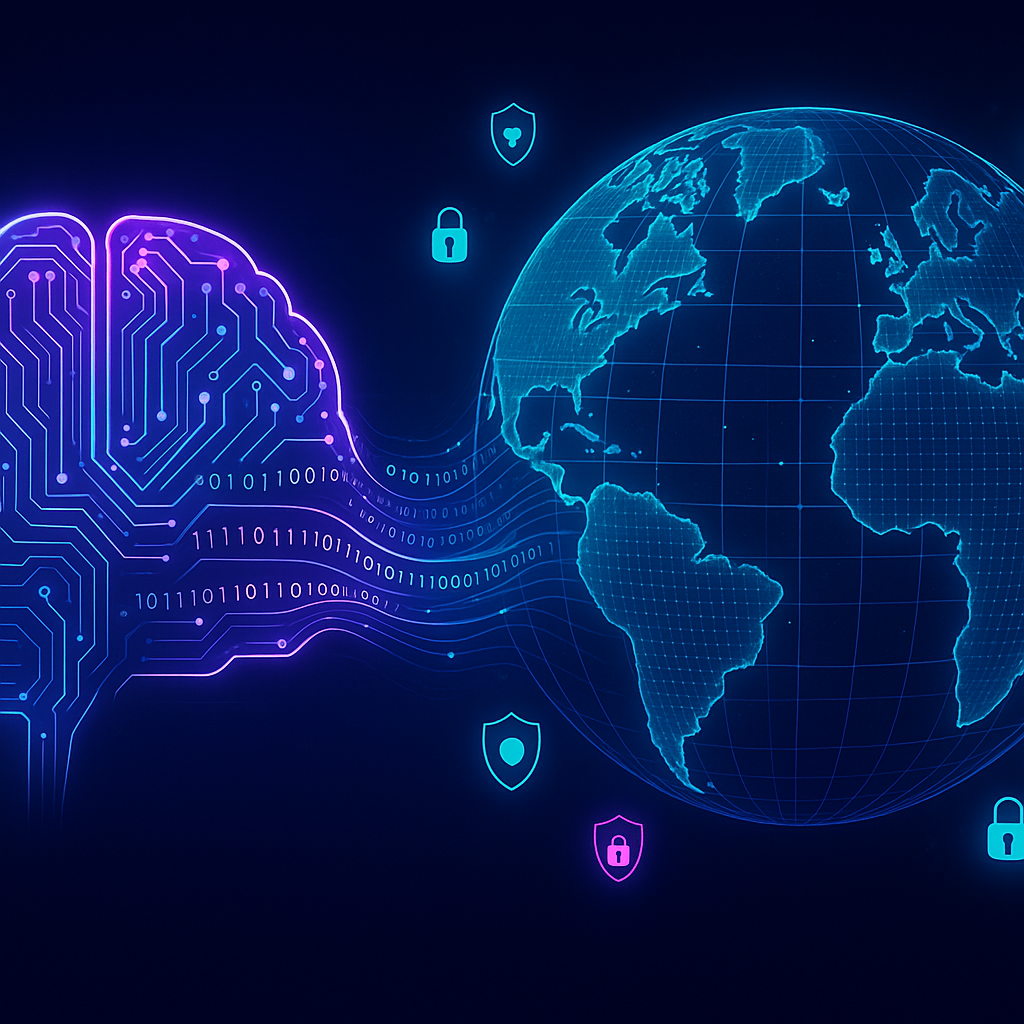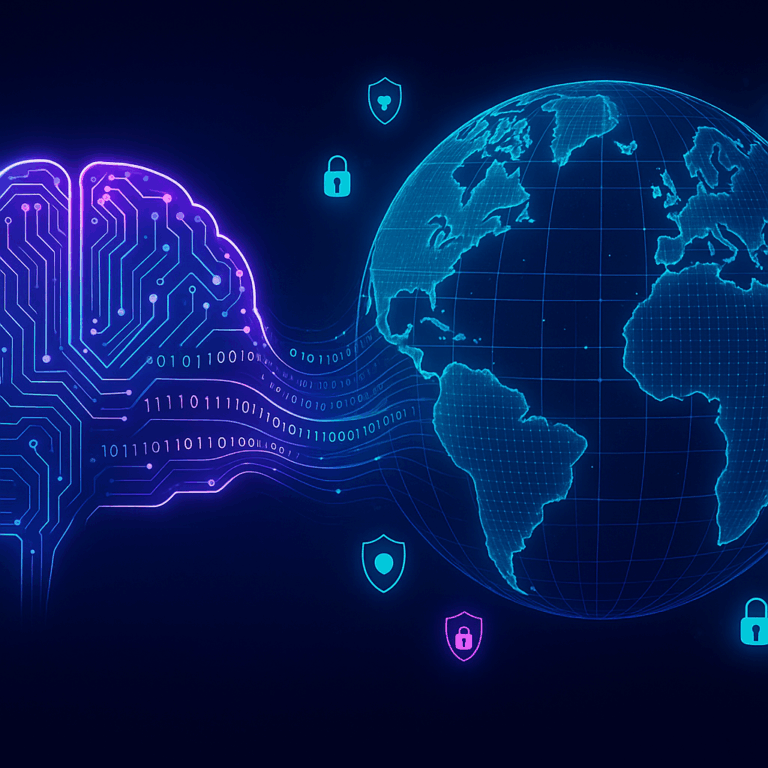AI’s Dual Role in Cyber Defense: Protection and Vulnerability
Artificial Intelligence (AI) has cemented itself as a double-edged sword in the cybersecurity landscape. On one hand, AI enhances our ability to detect and mitigate cyber threats with unprecedented accuracy and speed. On the other hand, cyber attackers are weaponizing the same technology to launch ever more sophisticated attacks. This dichotomy presents a pressing challenge for cybersecurity professionals, who must stay abreast of emerging trends and techniques to protect sensitive data and maintain robust defenses.
The Promising Side: AI in Cyber Defense
AI-Driven Threat Detection
AI’s potential to revolutionize threat detection cannot be overstated. By leveraging machine learning algorithms, AI systems can analyze patterns in vast amounts of data to identify anomalies that may signify a cyber threat. Unlike traditional rule-based systems, AI adapts over time, learning from new data to improve its threat detection capabilities. This is especially crucial in an era of persistent threats where attackers continuously evolve their techniques.
According to a report by Gartner (2023), firms that incorporate AI into their cybersecurity measures have seen a 15% reduction in successful cyberattacks. By utilizing AI-driven threat detection, companies are better equipped to identify malware, phishing attempts, and even insider threats before they cause significant damage.
Automation and Response
Another significant advantage of AI in cybersecurity is automated response. Once a threat is detected, AI systems can act almost instantaneously to neutralize the danger. This automation is critical in mitigating damage, as it drastically reduces response times compared to human intervention.
- AI can isolate compromised systems to prevent the spread of malware.
- It can automatically apply patches to known vulnerabilities.
- AI-driven systems can also deploy honeypots to divert attackers, gaining insights into their methodologies.
The Dark Side: AI in the Hands of Cybercriminals
AI-Powered Cyberattacks
While AI bolsters defenses, it also equips cybercriminals with new tools. One alarming trend is the misuse of AI for launching automated and highly targeted cyberattacks. For instance, AI can be used to craft phishing emails that are indistinguishable from legitimate communications, enhancing the likelihood of successful social engineering attacks.
Moreover, attackers can deploy AI to scan networks for vulnerabilities more efficiently than traditional methods, reducing the window of opportunity for defenders to patch weaknesses. The sophistication of AI-driven attacks means that cybersecurity professionals must continually update and refine their defensive strategies to keep pace.
Adversarial Machine Learning
Adversarial machine learning is another emerging threat where attackers manipulate AI models to evade detection. By subtly altering inputs, they can deceive AI systems into misclassifying malicious activity as benign. This kind of attack not only undermines AI-based security measures but also erodes trust in the technology.
A study published in the Journal of Cybersecurity (2023) highlights several instances where adversarial attacks successfully bypassed AI-driven protections, emphasizing the need for robust model validation and continuous monitoring.
Strategies for Balancing AI’s Double-Edged Nature
Advanced Anomaly Detection
To counter AI-driven threats, deploying advanced anomaly detection mechanisms is crucial. These systems should be capable of distinguishing between benign deviations and malicious activities. Combining AI with traditional cybersecurity protocols can enhance anomaly detection accuracy.
Continuous Model Training and Validation
Ensuring the robustness of AI models against adversarial attacks requires ongoing training and validation. Cybersecurity teams should implement processes for regular model updates and adversarial testing.
Collaborative Intelligence
Human-AI collaboration—referred to as collaborative intelligence—is vital. While AI excels at processing data at scale, humans bring contextual understanding and critical thinking. Cybersecurity frameworks should integrate AI seamlessly with human oversight to enhance decision-making.
Looking Ahead: The Future of AI in Cybersecurity
The future of AI in cybersecurity is a battleground of innovation between defenders and attackers. Predictive analytics, quantum computing, and enhanced machine learning techniques will play pivotal roles. However, ethical considerations and regulatory frameworks will also shape how AI is deployed in cybersecurity contexts.
As we navigate this complex landscape, the key will be staying informed and adaptive. Cybersecurity professionals must engage in continuous learning, leveraging community knowledge and staying updated on industry trends to anticipate and counter emerging threats.
References
Gartner. (2023). AI in Cybersecurity: Balancing Innovation and Risk. Retrieved from Gartner.
Journal of Cybersecurity. (2023). Adversarial Machine Learning in Cyber Defense. Retrieved from Oxford Journals.




